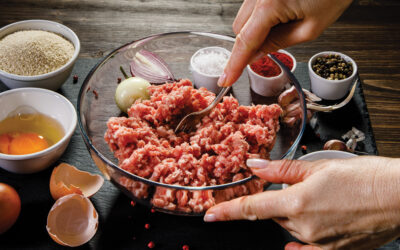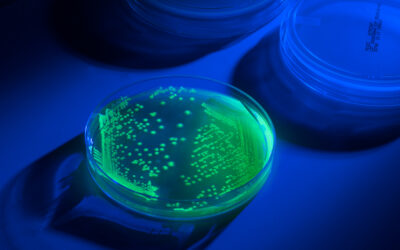This holiday season, as you open a bottle of your favorite wine to share with family and friends, consider making a toast to Saccharomyces cerevisiae (also known as “brewer’s yeast”) which is a species of yeast that is commonly used for making wine and beer. Yeast is absolutely essential to winemaking. The Latin meaning of Saccharomyces is “sugar fungus”. Through the process of fermentation, S. cerevisiae converts the natural sugars present in grape juice to carbon dioxide and ethanol (alcohol), resulting in wine.
How does fermentation begin? The process begins with the preparation of the grapes. In the case of white wine, juice is pressed from the grapes. Red wine, which is high in antioxidants, is prepared from a mixture of juice, seeds and pulp. Winemakers can let the juice ferment spontaneously using the wild yeasts found on the grapes or they can inoculate the juice with yeast.
Spontaneous Fermentation
During spontaneous fermentation, various species of wild yeast dominate for the first one to three days. Most of the species present only tolerate low levels of alcohol, so when the alcohol level reaches 3 to 4 percent those species begin to die off and alcohol tolerant Saccharomyces cerevisiae (which may be present on as few as one in 1,000 grapes) dominate the fermentation process. Proponents of spontaneous yeast fermentation claim that wines produced using wild yeast have added texture and finesse.
Spontaneous yeast fermentation has its pitfalls. Rain right before harvest can hamper fermentation because it washes the microorganisms off the grape. Another hazard is a “stuck” fermentation where fermentation stops before all the sugar has been consumed. When fermentation becomes stuck, the protective layer of carbon dioxide is removed, allowing spoilage bacteria such as Acetobacter to turn the remaining wine into vinegar.
Fermentation by Inoculation
Because many winemakers want reliability, they choose to inoculate grape juice with a pure strain of yeast such as the Montrachet strain of Sacchaomyces cerevisiae. S. cerevisiae is a species often favored by wine makers because it starts fermenting grape juice within a few hours. It also tolerates alcohol levels of up to 17%, allowing it to ferment all the sugar while producing minimal amounts of unwanted by-products.
In order to add complexity to the wine but avoid the hazards of spontaneous yeast fermentation, some wineries use a combination of methods. They initially let the wild yeast start the fermentation process and then inoculate the wine with a known strain of yeast. Other wineries pick small portion of their grapes a week before harvest, allow the grapes to ferment, and then add the “starter” culture to their harvest.
If you want to experiment with winemaking at home, you can purchase S. cerevisiae from winemaking supply stores (not Microbiologics because the yeast we sell is for quality control testing only). Just remember, the process of wine making can be as complex as the taste of wine and Saccharomyces cerevisiae is a rock star when it comes to fermentation.
References:
Casey, Mike. Certified Sommelier; ISG &CMS, Elysium Fine Wines, Denver, Colorado.
Chorniak, Jeff. Wild Yeast: The Pros and Cons of Spontaneous Fermentation; WineMaker; Oct/Nov 2005 http://www.winemakermag.com/stories/article/indices/43-yeast/758-wild-yeast-the-pros-and-cons-of-spontaneous-fermentation
Ross, Jordan P. Going Wild: Wild Yeast in Winemaking; Enology International http://www.enologyinternational.com/yeast/wildyeast.html






Cheers with the article. Actually thank you! Need more.